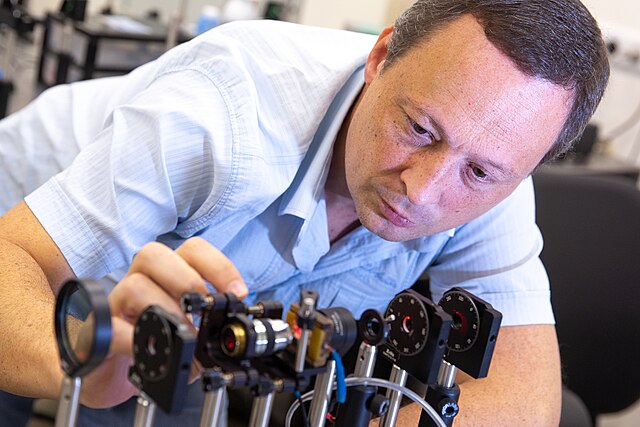Augustin-Jean Fresnel was a French civil engineer and physicist whose research in optics led to the almost unanimous acceptance of the wave theory of light, excluding any remnant of Newton's corpuscular theory, from the late 1830s until the end of the 19th century. He is perhaps better known for inventing the catadioptric (reflective/refractive) Fresnel lens and for pioneering the use of "stepped" lenses to extend the visibility of lighthouses, saving countless lives at sea. The simpler dioptric stepped lens, first proposed by Count Buffon and independently reinvented by Fresnel, is used in screen magnifiers and in condenser lenses for overhead projectors.
Portrait of "Augustin Fresnel" from the frontispiece of his collected works, 1866
Monument to Augustin Fresnel on the facade of his birthplace at 2 Rue Augustin Fresnel, Broglie (facing Rue Jean François Mérimée), inaugurated on 14 September 1884. The inscription, when translated, says: "Augustin Fresnel, engineer of Bridges and Roads, member of the Academy of Sciences, creator of lenticular lighthouses, was born in this house on 10 May 1788. The theory of light owes to this emulator of Newton the highest concepts and the most useful applications."
Nyons, France, 19th century, drawn by Alexandre Debelle (1805–1897)
Altered colors of skylight reflected in a soap bubble, due to thin-film interference (formerly called "thin-plate" interference)
Optics is the branch of physics that studies the behaviour and properties of light, including its interactions with matter and the construction of instruments that use or detect it. Optics usually describes the behaviour of visible, ultraviolet, and infrared light. Light is a type of electromagnetic radiation, and other forms of electromagnetic radiation such as X-rays, microwaves, and radio waves exhibit similar properties.
A researcher working on an optical system
The Nimrud lens
Reproduction of a page of Ibn Sahl's manuscript showing his knowledge of the law of refraction
The first treatise about optics by Johannes Kepler, Ad Vitellionem paralipomena quibus astronomiae pars optica traditur (1604), generally recognized as the foundation of modern optics.








